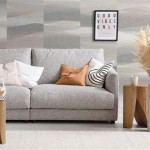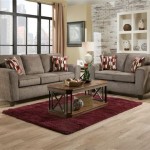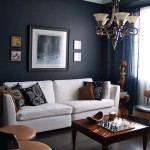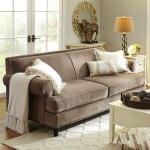Coastal Area Rugs For Living Room: Bringing the Beach Home
Coastal area rugs are a popular design choice for living rooms, offering a connection to the serene and calming atmosphere of the coast. These rugs, characterized by specific colors, textures, and patterns, can transform an ordinary living space into a beach-inspired retreat. The selection of an appropriate coastal area rug involves considering various factors, including material, size, color palette, and the overall design aesthetic of the room. Understanding these aspects is crucial for creating a harmonious and visually appealing living room environment.
Understanding the Coastal Aesthetic
The coastal aesthetic encompasses a wide range of design elements that evoke the feeling of being near the ocean. It is characterized by a light and airy atmosphere, natural materials, and a calming color palette. Common design features include the use of blues, whites, and sandy beiges, often accented with pops of coral, seafoam green, or navy. Textures play a significant role, with materials like jute, sisal, cotton, and wool used to mimic the natural elements found on the coast. Patterns often incorporate nautical themes, such as stripes, waves, seashells, or coral motifs.
Coastal design is not limited to a single style. It can range from a minimalist, Scandinavian-influenced approach with clean lines and muted colors to a more traditional, nautical-themed look with detailed patterns and rich textures. The specific style chosen will depend on personal preferences and the existing decor of the living room. However, the underlying principle remains the same: to create a space that is relaxing, inviting, and reminiscent of the coast.
When selecting a coastal area rug for the living room, it is important to consider how the rug will complement the existing furniture, wall color, and accessories. The rug should act as a foundation for the room, tying together the various elements and creating a cohesive look. It should also be functional, providing comfort underfoot and defining the seating area.
Key Considerations When Choosing a Coastal Area Rug
Selecting the right coastal area rug for a living room involves carefully considering several factors to ensure it aligns with the desired aesthetic and functional needs. These considerations include material selection, size and shape, color and pattern, pile height and texture, and durability and maintenance. Each factor contributes to the overall look and feel of the room, as well as the longevity and practicality of the rug.
Material Selection: The material of a coastal area rug significantly impacts its appearance, durability, and feel. Natural fibers like jute and sisal offer a rustic, textured look that is well-suited to a casual coastal style. Jute rugs are soft underfoot and add warmth to the space, while sisal rugs are more durable and resistant to wear and tear. Cotton rugs are lightweight and easy to clean, making them a good option for high-traffic areas. Wool rugs are known for their softness, durability, and insulation properties, but they may require more maintenance. Synthetic fibers like polypropylene and nylon are also popular choices for coastal area rugs, as they are stain-resistant, fade-resistant, and easy to clean, making them ideal for households with children or pets. The choice of material will depend on the desired aesthetic, budget, and lifestyle.
Size and Shape: The size and shape of the area rug are crucial for defining the living room's layout and creating a sense of proportion. A rug that is too small can make the room feel disjointed, while a rug that is too large can overwhelm the space. As a general guideline, the rug should be large enough to anchor the furniture arrangement. Ideally, the front legs of the sofas and chairs should rest on the rug. In smaller living rooms, the rug may only need to be large enough to fit under the coffee table. Common rug shapes include rectangular, square, round, and oval. Rectangular rugs are the most versatile and work well in most living rooms. Round or oval rugs can soften the look of a room with angular furniture. Consider the shape of the room and the furniture arrangement when selecting the rug's shape and size.
Color and Pattern: The color and pattern of the coastal area rug should complement the existing decor of the living room. A coastal color palette typically includes blues, whites, and sandy beiges, but can also incorporate pops of coral, seafoam green, or navy. A rug with a subtle pattern can add visual interest without overwhelming the space. Common coastal patterns include stripes, waves, seashells, coral motifs, and geometric designs. A solid-colored rug can also be a good option, especially if the rest of the room has a lot of patterns. Consider the overall color scheme of the living room and choose a rug that will tie the various elements together. If the walls are painted a neutral color, a rug with a bolder pattern or color can add a focal point to the room. If the walls are already colorful, a rug with a more subtle pattern or neutral color may be a better choice.
Pile Height and Texture: The pile height and texture of the area rug affect its comfort and aesthetic appeal. A low-pile rug is more durable and easier to clean, making it a good option for high-traffic areas. A high-pile rug is softer and more luxurious underfoot, but it may require more maintenance. The texture of the rug can also add visual interest to the room. A rug with a shag pile can create a cozy and inviting atmosphere, while a rug with a flat weave can offer a more modern and minimalist look. Consider the desired level of comfort and the overall style of the living room when selecting the pile height and texture of the rug.
Durability and Maintenance: The durability and maintenance requirements of the area rug are important considerations, especially for homes with children or pets. Rugs made from durable materials like sisal, polypropylene, or nylon are more resistant to wear and tear. Stain-resistant rugs are also a good option for households with children or pets. Consider how much foot traffic the rug will receive and choose a material that can withstand the wear and tear. Regular vacuuming and occasional professional cleaning will help to maintain the rug's appearance and extend its lifespan. Follow the manufacturer's instructions for cleaning and maintenance to ensure that the rug remains in good condition.
Exploring Different Coastal Rug Styles
Within the broader category of coastal area rugs, several distinct styles cater to different preferences and design approaches. Understanding these styles allows for a more targeted selection process, ensuring the chosen rug aligns with the overall vision for the living room.
Nautical: Nautical rugs often feature classic maritime motifs such as stripes, anchors, ropes, and sailboats. The color palette typically includes navy blue, white, and red, creating a bold and traditional coastal look. These rugs are often made from durable materials like cotton or wool and can add a touch of historical charm to a living room.
Beach-Inspired: Beach-inspired rugs focus on capturing the natural elements of the beach. They often feature sandy beiges, soft blues, and greens, mimicking the colors of the sand, sea, and vegetation. Patterns may include seashells, coral, and wave designs. These rugs are often made from natural fibers like jute or sisal, adding a rustic and textured feel to the space.
Hamptons Style: Hamptons style rugs embody a sophisticated and elegant coastal aesthetic. They often feature neutral colors like white, cream, and gray, with subtle patterns and textures. Materials like wool and cotton are common, providing a luxurious and comfortable feel. Hamptons style rugs add a touch of refinement to a living room, creating a relaxed yet polished atmosphere.
Tropical: Tropical rugs bring a vibrant and exotic flair to the coastal look. They often feature bold colors like greens, yellows, and oranges, with patterns inspired by tropical plants and animals. Materials like jute and sisal can add a natural and textured feel, while synthetic fibers can provide durability and stain resistance. Tropical rugs create a lively and inviting atmosphere in a living room.
Modern Coastal: Modern coastal rugs offer a contemporary take on the classic coastal aesthetic. They often feature clean lines, minimalist patterns, and a muted color palette. Materials like wool, cotton, and synthetic fibers are used, providing a range of options for durability and comfort. Modern coastal rugs add a touch of sophistication and simplicity to a living room.

Private Brand Unbranded Bazaar Coral Multi 5 Ft X 7 Coastal Area Rug 39415 The Home

Jaipur Living Coastal Seaside Grant Design Collaborative Bough Nautical Wool Area Rugs Direct

16 Coastal Rugs Under 250 Affordable Style Area We Re The Joneses

Jaipur Living Coastal Lagoon Coral Rugs Direct

Mohawk Home Prismatic Coastal Splash Aqua Transitional Nature Precision Printed Area Rug 5 X8 Blue Walmart Com

Coastal Rugs Which Fit A Design Style Sisalcarpet

Coastal Rugs How To Pick The Best Area For Your Beach House

Nuloom 8 X 10 Braided Blue Indoor Outdoor Stripe Coastal Area Rug In The Rugs Department At Lowes Com

Jaipur Living Coastal Resort Schooled Nautical Wool Area Rugs Direct

Pin On Beach Area Rugs








